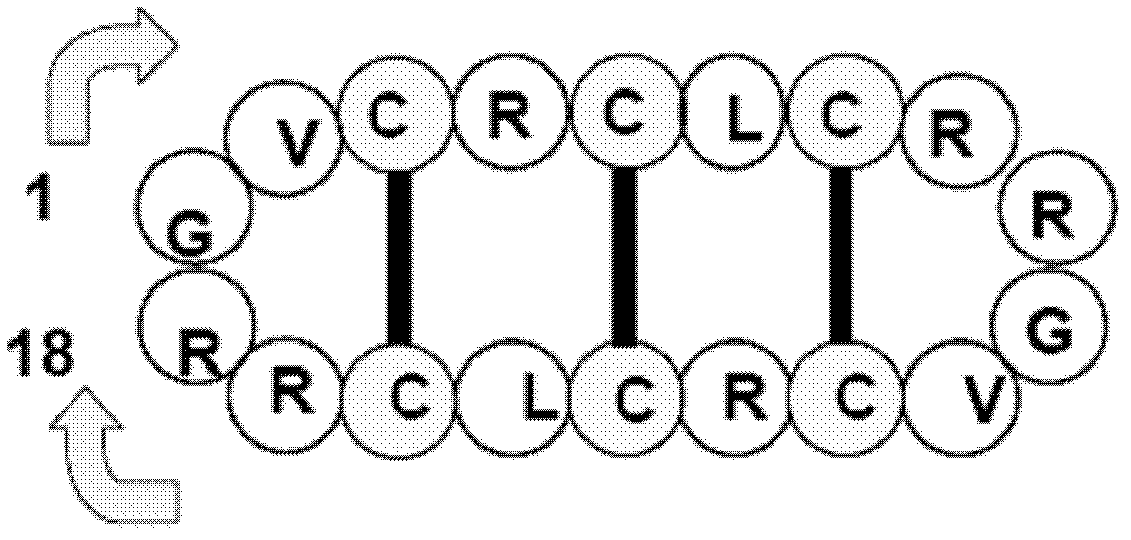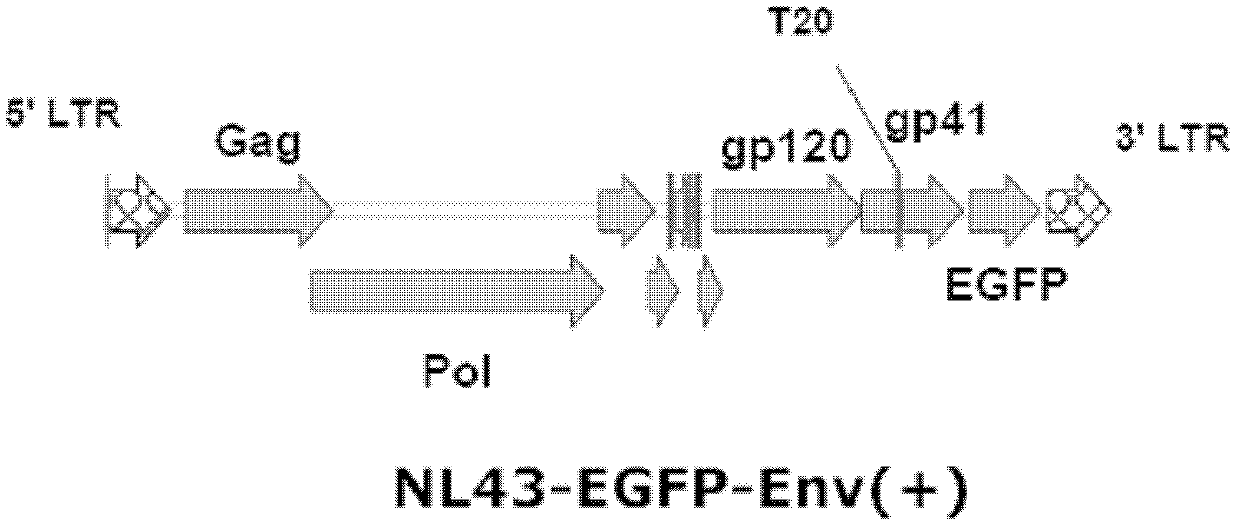Application of oxetanocin in preparation of antiviral medicament
A technology of antiviral drug, thetasu, applied in the field of western medicine
- Summary
- Abstract
- Description
- Claims
- Application Information
AI Technical Summary
Problems solved by technology
Method used
Image
Examples
preparation example Construction
[0041] 2. Virus Preparation and Quantification
[0042] HIV clones were prepared by calcium-precipitating 293T cells. Reagents were purchased from the Profection Kit (www.promega.com) from Promega, USA. See references [2-4] for details. Titration of viral load was determined by measuring the p24 protein of HIV virus. H1N1 Influenza A virus is also used for the preparation of 293T cells by calcium precipitation, see reference [5] . Viruses were quantified by dilution titration. When the virus is diluted to a certain degree, the virus unit when the possibility of virus infecting HOT cells is reduced to 50% is 1 cell culture infection dose 50 (Tissue Culture Infectivity Dose 50, TCID 50 ).
[0043] 3. Virus Infection of Cultured Cells
[0044] Methods for HIV infection of various cells are described in references [2, 4, 6]. To infect HOT cells with influenza A virus, put the cells into a 24-well cell culture dish 16 hours ago. 10 cells per well 4 .Each well contains 0.5...
Embodiment 1
[0047] Embodiment 1 evaluates the antiviral effect of thetasu with the virus with green fluorescent protein
[0048] After CEM-CCR5CD4+, CCR5+ lymphocytes were infected by the same titer of HIV, the virus produced was quantified by the amount of HIV p24 protein. In two days, the amount of virus produced by NL4-3 and the virus with EGFP was equal, indicating that the infection and proliferation rate of HIV with EGFP gene was close to that of wild-type parental virus under the condition of cell culture. At 4 days, the virus produced by NL4-3 had a slight advantage over the virus with EGFP ( image 3 a). The situation of JRCSF infection is also similar ( image 3 b). Therefore, the HIV modified with EGFP gene is suitable for the evaluation research of thetasin antiviral ability.
Embodiment 2
[0049] The inhibition of embodiment 2 thetasu to HIV infection
[0050] We first used the most commonly used combination in the laboratory, NL4-3 HIV to infect HeLa-CD4 cells to measure the anti-HIV effect of thetasu. In order to clarify the therapeutic potential of thetasine as a short peptide drug, we used the short peptide T20 (trade name Fuzeon, produced by Roche) that has been put on the market for the treatment of AIDS as a control to investigate the inhibitory effect of thetasine on HIV infection.
[0051] Different amounts of thetasine or T20 peptide were put into HeLa-CD4 cell culture dishes 1 hour before infection. HeLa-CD4 cells were infected with NL4-3 HIV at an average of 1 virus per cell for 3 hours. Residual virus is then eluted. After 3 days, the cells were collected and put into a flow cytometer to calculate the proportion of infected cells, the results are shown in Figure 4 . Figure 4 It shows that the inhibitory effect of T20 on HeLa-CD4 cells infected...
PUM
| Property | Measurement | Unit |
|---|---|---|
| length | aaaaa | aaaaa |
| diameter | aaaaa | aaaaa |
Abstract
Description
Claims
Application Information
 Login to View More
Login to View More - R&D
- Intellectual Property
- Life Sciences
- Materials
- Tech Scout
- Unparalleled Data Quality
- Higher Quality Content
- 60% Fewer Hallucinations
Browse by: Latest US Patents, China's latest patents, Technical Efficacy Thesaurus, Application Domain, Technology Topic, Popular Technical Reports.
© 2025 PatSnap. All rights reserved.Legal|Privacy policy|Modern Slavery Act Transparency Statement|Sitemap|About US| Contact US: help@patsnap.com



